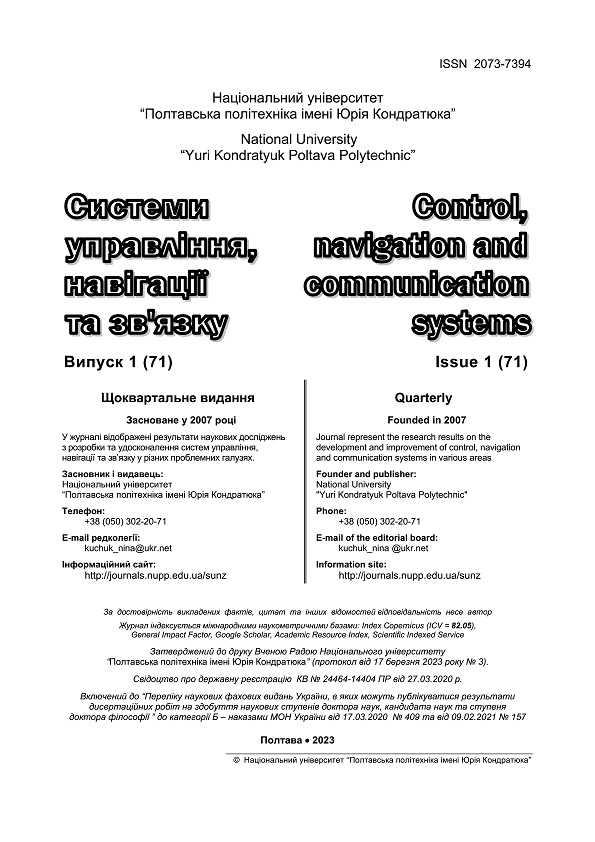METHOD OF WORKING OF A RECOMMENDER SYSTEM IN A PEER-TO-PEER COMPUTER NETWORK
DOI:
https://doi.org/10.26906/SUNZ.2023.1.112Keywords:
recommendation systems, collaborative filtering, computer networks, peer-to-peer networks, decentralized networks, distributed hash tablesAbstract
The article is devoted to the development of a method of work of recommendation systems in decentralized peer-to-peer computer networks. There are a large number of methods of recommendation systems for websites and applications designed for centralized computer networks. At the same time, the research of decentralized peer-to-peer networks has shown that the issue of creating recommendation systems for such architecture was practically not considered. The research of methods of work of structured decentralized peer-to-peer computer networks has been conducted, and generalized principles of their work are presented. The method of work of a recommendation system based on collaborative filtering for a structured decentralized peerto-peer computer network with addressing based on distributed hash tables is proposed. To present the data of a recommendation system two data structures were used: the unrolled linked lists and the hash tables with open addressing. Also two types of unrolled linked lists were used: associated with users – contained lists of objects they like and associated with objects – contained lists of users who liked the appropriate objects. Each computer in a decentralized network has a preference list of associated with its user and preference lists of associated with objects located on it. The information missing on the current computer was accessed by requests to other computers using the corresponding IDs organized by a distributed hash table of a peer-to-peer decentralized network. An experimental research of proposed method of work of a recommendation system was conducted. It showed that the developed method has quite high Precision and a low RMSE. The disadvantage of the developed method is the low Recall, that is due to the fact that the method often makes false negative predictions. This does not in any way affect the accuracy of the recommendations, because objects with a negative prediction of preferences do not fall on the lists of recommendations. But this impairs the fullness of recommendations because many elements that could be added to them are rejected.Downloads
References
“Recommender Systems Handbook” (2010) Editors F. Ricci, L. Rokach, B. Shapira, P. B. Kantor, New York, NY, USA: Springer-Verlag New York, Inc., 842 p.
Jones M. (2013) “Recommender systems, Part 1. Introduction to approaches and algorithms. Learn about the concepts that underlie web recommendation engines”, URL: https://www.ibm.com/developerworks/opensource/library/osrecommender1/index.html?s_tact=105agx99&s_cmp=cp
Riposo Ju. Diffusion on the Peer-to-Peer Network // LAP LAMBERT Academic Publishing. – 2022. – 100 p.
Koo S.G.M. Multimedia Content Distribution Using Peer-to-Peer Overlay Networks: The Design and Analysis of the Next Generation Peer-to-Peer Networks // VDM Verlag Dr. Müller. – 2008. – 88 p.
Milojicic D.S., Kalogeraki V., Lukose R., Nagaraja K., Pruyne J., Richard B., Rollins S., Xu Z. Peer-to-peer computing // Technical Report HPL-2002-57, HP Labs. – 2002. – 51 р. – URL: https://www.cs.kau.se/cs/education/courses/dvad02/p2/ seminar4/Papers/HPL-2002-57R1.pdf
Zeinalipour-Yazti D., Kalogeraki V., Gunopulos D. Information retrieval techniques for peer-to-peer networks // Com-puting in Science & Engineering, Vol. 6, No. 4, pp. 20-26. – 2004. – DOI: 10.1109/MCSE.2004.12
Lua E.K., Crowcroft J., Pias M., Sharma R., Lim S. A Sur-vey and Comparison of Peer-to-Peer Overlay Network Schemes // IEEE Communications survey and tutorial. – 2004. – URL: https://snap.stanford.edu/class/cs224w-readings/lua04p2p.pdf
Kalogeraki V., Gunopulos D., Zeinalipour-Yazti D. A Local Search Mechanism for Peer-to-Peer Networks // Proc. of CIKM'02, McLean VA, USA, 2002. – URL: http://alumni.cs.ucr.edu/~csyiazti/downloads/papers/cikm02/cikm02.pdf
Zeinalipour-Yazti D. Information Retrieval in Peer-to-Peer Systems // M.Sc Thesis, Dept. of Computer Science, University of California Riverside. – 2003. – URL: http://alumni.cs.ucr.edu/~csyiazti/papers/msc/html/
Kademlia: A Design Specification – 2010. – URL: https://xlattice.sourceforge.net/components/protocol/kademlia/specs.html
Stoica I. , Morris R., Karger D.R., Kaashoek M.F., Balakrishnan H. Chord: A Scalable Peer-to-Peer Lookup Service for Internet Applications // ACM SIGCOMM Computer Communication Review, Vol. 31(4). – 2001. DOI: 10.1145/964723.383071
The BitTorrent Protocol Specification – 2017. – URL: http://www.bittorrent.org/beps/bep_0003.html
Gnutella Protocol Development – 2003. – URL: https://rfc-gnutella.sourceforge.net
Міхав В.В., Мелешко Є.В., Якименко М.С., Бащенко Д.В. Методи зберігання даних рекомендаційної системи на основі зв’язних списків // Системи управління, навігації та зв’язку – Полтава: ПНТУ, 2021. – Т. 4(66). – С. 59-62. – DOI: https://doi.org/10.26906/SUNZ.2021.4.059
Harper F.M., Konstan J.A. The MovieLens Datasets: History and Context // ACM Transactions on Interactive Intelligent Systems (TiiS). – 2015. – 19 p. – URL: https://doi.org/10.1145/2827872
Мелешко Є.В. Методи оцінки якості роботи рекомендаційних систем // Системи управління, навігації та зв'язку. – Полтава: ПНТУ, 2018. – Вип. 5 (51). – С. 92-97. – DOI: https://doi.org/10.26906/SUNZ.2018.5.09




